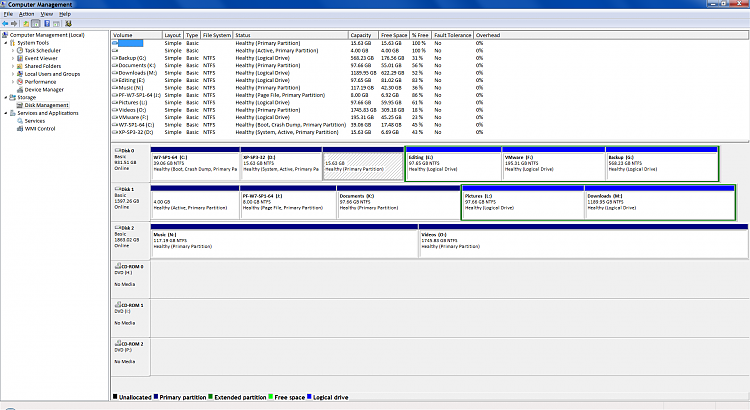New
#1
Swapping drive allocation - E: to D:
I have the following drives on my Win7 system;
C: my primary SATA SSD (O/S & Apps)
D: my SATA DVD R/W
E: my secondary drive SATA HDD (data repository)
and a bunch of USB2 ports.
I also have a card reader (SATA) but it won't show as a drive till a card is placed in it.
I will shortly add an external USB3 HDD as a dedicated backup.
And later, temporarily, an old IDE HDD with some old data to be transferred to my E: drive. It will then be removed.
Here's the problem.
I use Windows Explorer a lot, especially now that I am recovering my old systems data files. (old sys had a HDD crash. Upgraded to an SSD and Win7 and now I am reconfiguring the whole shot from the recovered data HDD E:.)
I am so used to D: being my secondary that I keep waking up the DVD. The tray then slams into the case cover repeatedly till I open the door and close the tray.
I want to swap the drive letter allocations for E: and D:. The others I don't care what allocation they are.
I have renamed the C: and E: drives, but I cannot rename the DVD (D: ) drive.
Any way to do this?
If it means swapping SATA data cables or strapping the drives, that's no sweat for me.


 Quote
Quote

